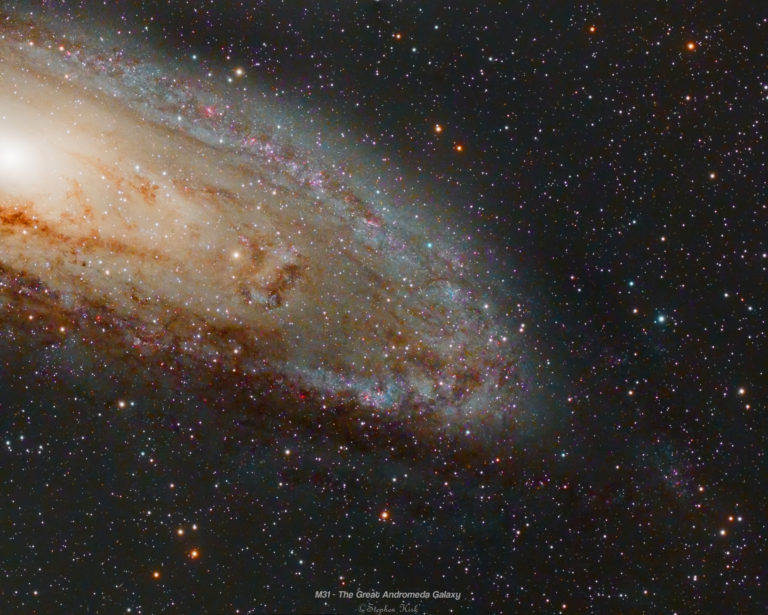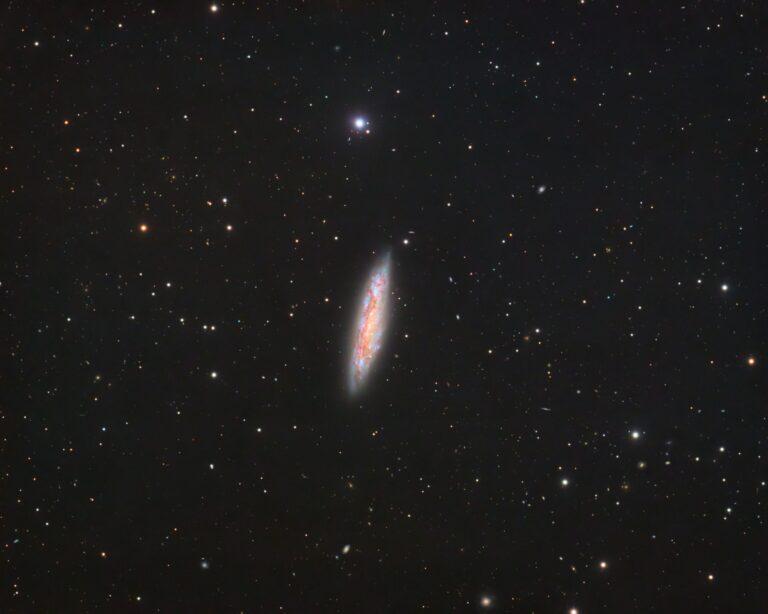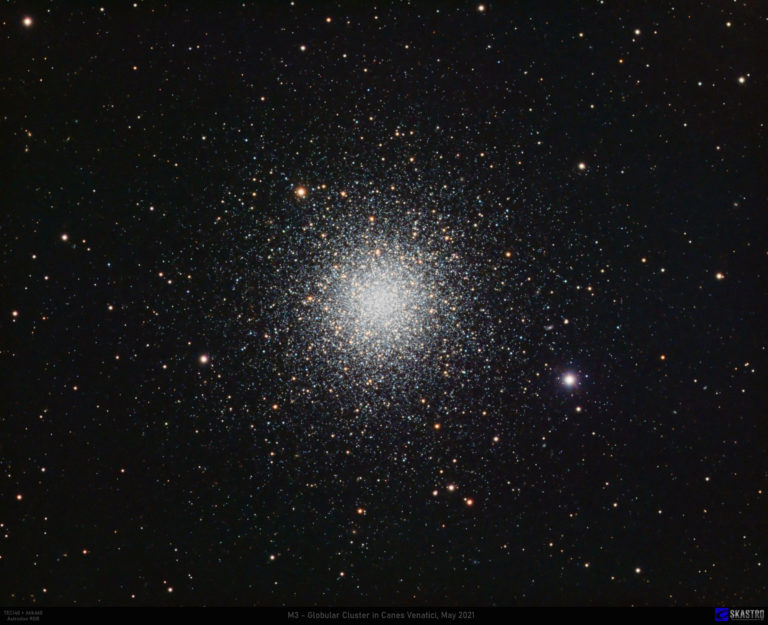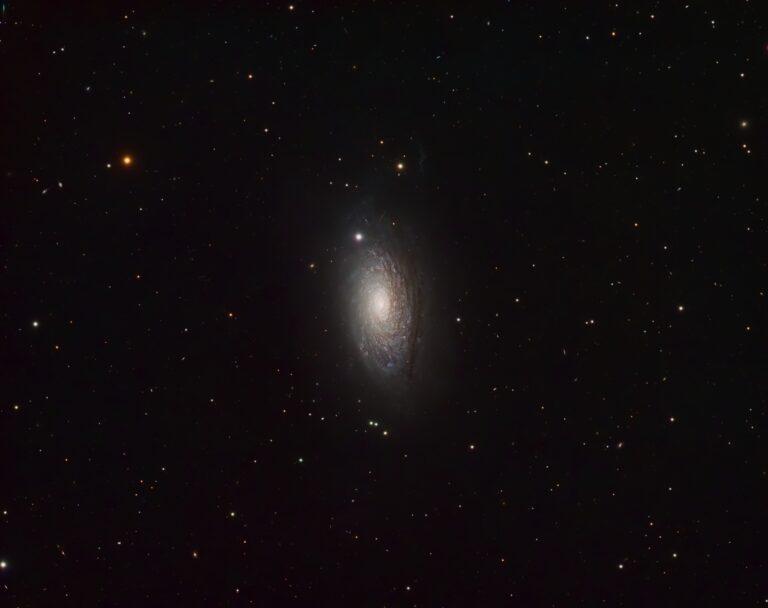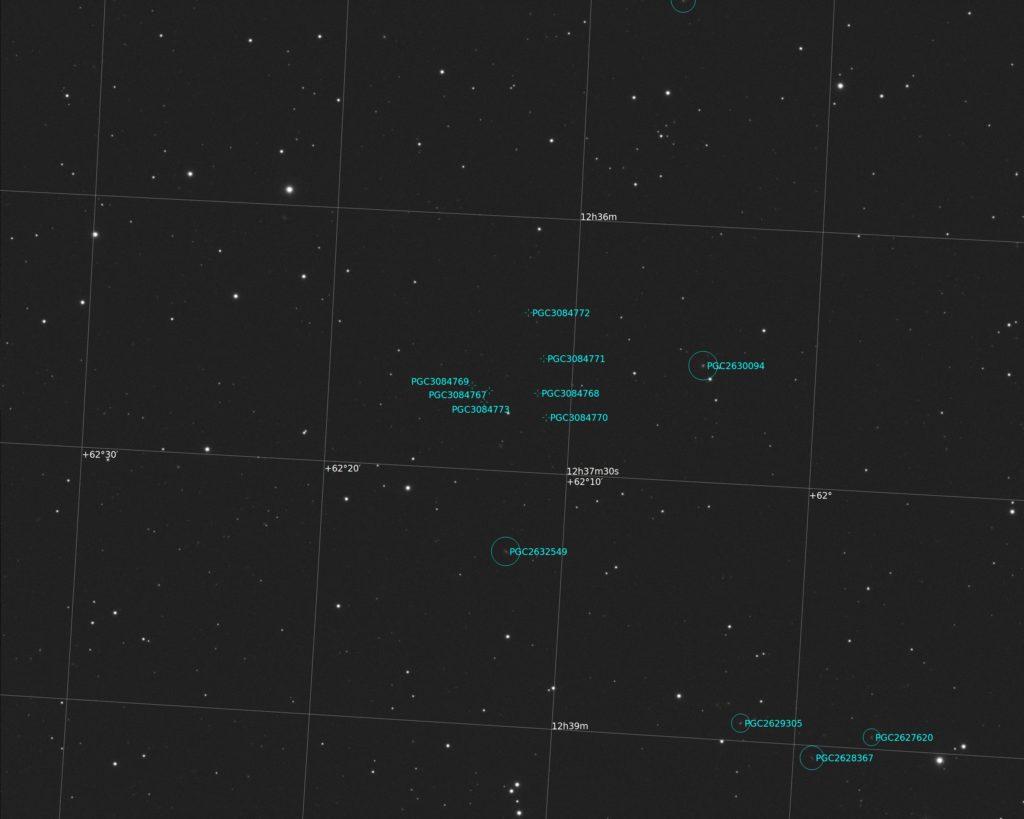M31 is one of the most favoured and popular imaging targets in the night sky; it is bright, large and very photogenic. I have imaged this galaxy numerous times, for example, in this LRGB version and in this OSC version. Since the galaxy is so large, each of these images is set in a wide field, one of 3 degrees horizontally and 2 degrees vertically across the field of view which equates to six times the diameter of the full moon. Many newcomers do not appreciate how large these objects are in the sky. Large but VERY dim! M31 in OSC from a QHY268C and Takahashi FSQ85 refractor The above image is at a resolution of 4.16arcsec/pixel. On such a large object as M31 this allows the entire galaxy to be imaged in one field of view on a wide field refractor such as the FSQ85 but does not allow…
M108 is a galaxy about 45 million light years away in the constellation of Ursa Major. It is sometimes called the surfboard galaxy because of its resemblance to a surfboard. Note the huge number of tiny, distant galaxies in the background. These are hundreds and in some cases up to two billion light years away from us. Technical Information I imaged M108 from my backyard observatory in Nottingham, UK on 4-5 April 2021 (two imaging sessions) when M108 was almost directly overhead. Conditions were very cold and frosty with good seeing and transparency. I used my TEC140 refractor and Atik 460 CCD camera with Astrodon E series Gen LRGB filters (1.25″). There is almost 9.5 hours of data in this image consisting of:Lum > 42 x 300s; Red > 24 x 300s; Green > 24x300s; Blue 24 x 300sEverything was binned 1×1. Image data was captured using Sequence Generator Pro software…
Lorem ipsum dolor sit amet, consectetur adipiscing elit. Ut elit tellus, luctus nec ullamcorper mattis, pulvinar dapibus leo.
M63 is a magnificent spiral galaxy located in the Northern constellation of Canes Venatici, about 30 million light years away. The galaxy is a member of the M51 group. There are lots of faint galaxies in the background. M63 – The Sunflower Galaxy Technical Data Full resolution image here (opens in new tab)M63, often called the Sunflower Galaxy because of its resemblance to that flower, is a spiral galaxy about 27 million light years away in the constellation of Canes Venatici. It is a member of the M51 group of galaxies.I captured the data for this image of the galaxy from my back yard observatory in Nottingham, UK over the nights of 4th and 5th of May 2021 when M63 was high near the zenith. Most of the data was captured in the middle of the night on an automated basis whilst I was asleep in bed! I used my…
Background The Hubble Deep Field (hereon-after the HDF) is an iconic image from the Hubble Space Telescope (HST). In 1995 the HST was instructed to stare at a tiny patch of space in the constellation of Ursa Major that is almost devoid of stars and is far from the plane of the galaxy, enabling the telescope to stare out of the galaxy into the depths of the Universe. It did this for about 190 hours with a total of 340 exposures and in so doing captured some of the most distant galaxies in the Universe, some of which are an astonishing 12 billion light years away. Location of The Hubble Deep Field The Hubble Deep Field through the Hubble Space Telescope The HDF is located above the “bowl” of The Plough (or Big Dipper as it is called in North America) asterism in Ursa Major as can be seen in…

